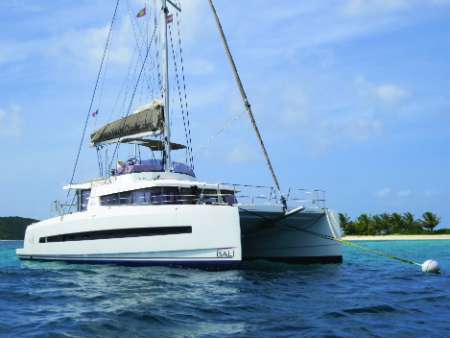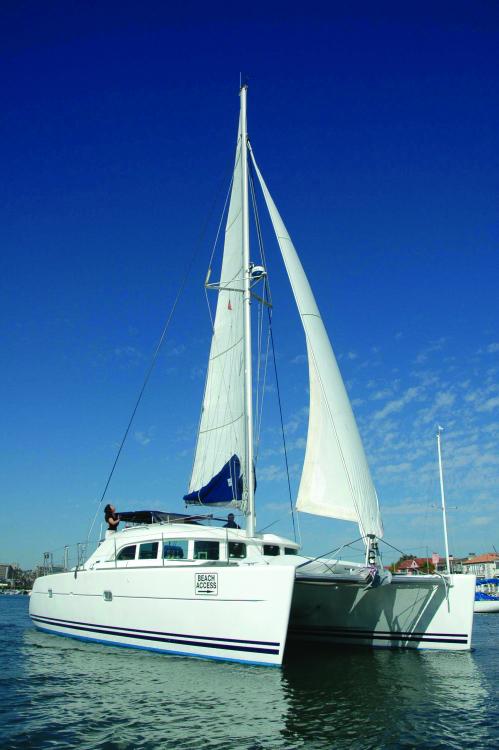When It Comes to Cats, It’s in the Way They Move
I love cats. The furry four-legged kind and the fiberglass two-hulled kind. I recently caught myself discussing the benefits of catamaran sailing, and I realized I’m dangerously close to becoming a cat evangelist. Two years ago, here in this column, I described how cats and monohulls compare. Now, having even more time on cats, I’ll skip the comparisons and simply describe why cats roar.
 Here kitty kitty
Here kitty kitty
Even small cats are big, but they don’t have to feel like a tennis court in motion. In fact, their size works to their advantage with props that are set wide apart for easy maneuvering. A cat will spin in its own length, walk sideways into a cross breeze, and remain agile even when pinned to a dock by wind.
With two shifters, it’s easy to learn how a cat will move. Simply exaggerate the movement of the levers with your shoulders and you’ll get a sense of the direction the boat will go. This is usually quite intuitive for cat novices when in forward, but in reverse things become more confusing. Just apply the shoulder trick again. If you want the boat to turn left when backing, give the starboard engine slightly more power in reverse or put the port engine in neutral while keeping the starboard engine in reverse.
When driving a cat, it’s best to make small adjustments until you get the feel for the boat’s responsiveness. I learned a lot from a French delivery captain who put a large cat into a small slip against a howling wind, and he did it all by using only one engine at a time. If you try to horse a cat around with full power on both engines, it’s likely you’ll overdo the adjustments and have to correct again or get caught up in your own prop wash. Unless there’s an additional issue such as a strong current, micro adjustments with one engine will keep you in total control and you’ll look like a pro picking up a mooring or slipping into a tight space at the restaurant dock.

The key to driving a cat is to be Zen with its abilities. The more relaxed and thoughtful you are, the more you’ll appreciate how a cat handles and what it can do without bow thrusters or giant engines.
Cats can take it
Because cats heel only slightly even in a big wind, it’s harder to feel when to reef. You can go by the numbers—usually taking a first reef at 18 knots—or you can spend a minute focusing on how the boat feels. Off the wind or in flat conditions, 18 knots won’t bother a cat at all. If the seas are big, however, and you’re sailing on a beam breeze or closer, you’ll want to pay attention to how the boat responds. How does it recover from a gust? If the boat starts to hesitate, it’s time to reef.
Cats have a different motion. They shimmy upwind and waddle downwind. For first-timers, that may feel weird, but it’s a motion you’ll soon get used to. I don’t even notice it anymore. What I do notice is that people are more sure-footed on a cat and that means kids, older folks, and pets are safer. I also notice that fewer people turn green even in lumpy conditions.
Where cats don’t excel
Despite my love affair with felines, I’ll admit that sailing to weather on a cat is a bit frustrating. Unless you’re sailing an uber-advanced cat with daggerboards and high performance hulls, tacking a cat is like sailing a shoebox and getting to a weather point may include slamming into oncoming seas with both engines running.
If you’re looking to sail hard from sun up to sun down on your charter, you won’t be happy with a cat. If you want that kind of “victory at sea” sailing, charter with a school or a performance monohull outfit. However, if you’ve chartered before, you know that a boating vacation is about seeing the destination, being comfortable, having fun with family and friends, docking confidently, and sailing without burying a rail. For that kind of an experience, you’ll find a twin-hulled boat to be the cat’s meow.
~By Zuzana Prochazka




